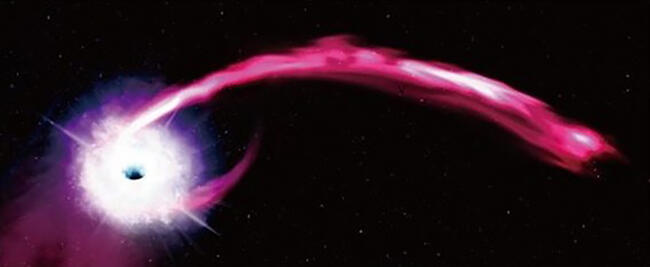An international research team from the Kavli Institute for the Physics and Mathematics of the Universe at the University of Tokyo led by project researcher Ji-an Jiang (currently project researcher at the National Astronomical Observatory of Japan), Visiting Senior Scientist Ken'ichi Nomoto, Visiting Senior Scientist Mamoru Doi and Professor Naoki Yasuda, has discovered from observations of the MUSSES project (MUltiband Subaru Survey for Early-phase Supernovae) a mysterious, transient astronomical event that was as bright as an super-luminous supernova, but evolving much faster. The research team was using the Subaru Telescope to look for supernovae to identify the origin and explosion mechanism of Type Ia supernovae, which is critical for measuring the expansion of the universe, when they found a supernova along with a new type of celestial object that became brighter than ordinary supernovae in a short period of time.

Provided by Kavli IPMU
By carrying out consecutive observations in December 2020, they discovered 20 fast-evolving transients. The research team focused on the behaviour on one of the transients, MUSSES2020J (AT2020afay), found to be an FBUT occurring at a distance of redshift 1.063.
"MUSSES2020J was discovered with very low brightness on December 11 in 2020, and it showed significant brightening during our observations," explains, Dr. Jiang. "More surprisingly, the very high redshift confirmed by follow-up observations indicate that brightness of MUSSES2020J was about 50 times higher than those of normal supernovae. These features are very similar to AT2018cow, a peculiar supernova discovered in 2018. We called these extreme transients Fast Blue Ultraluminous Transients (FBUT).
Temporal astronomy is the study of astronomical bodies that undergo significant changes in extremely short periods of time and is a research field that attracted a great deal of attention in the 2020s. "We will continue to unravel the mysteries of supernovae, FBUTs and other transients using the Subaru Telescope and the University of Tokyo's TAO Telescope, respectively the most powerful telescopes in visible light and infrared light on Earth, along with radio telescopes, satellite-borne telescopes, gravitational wave telescopes, neutrino telescopes and other telescopes," says Dr. Doi.
■ FBUT (Fast Blue Ultra-luminous Transient): A fast-developing object with a peak luminosity comparable to an ultra-luminous supernova but with a very fast rise in the luminosity curve. Possible physical mechanisms of FBUTs include tidal disruption events, in which a star is destroyed near a black hole, and interactions between the material ejected by a supernova and the surrounding material.
Kavli IPMU press release: https://www.ipmu.jp/en/20220713-MUSSES2020J
This article has been translated by JST with permission from The Science News Ltd.(https://sci-news.co.jp/). Unauthorized reproduction of the article and photographs is prohibited.




